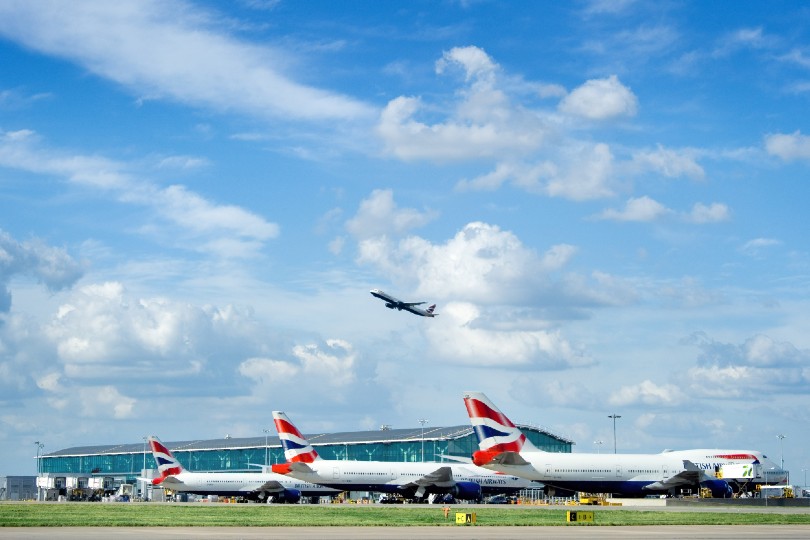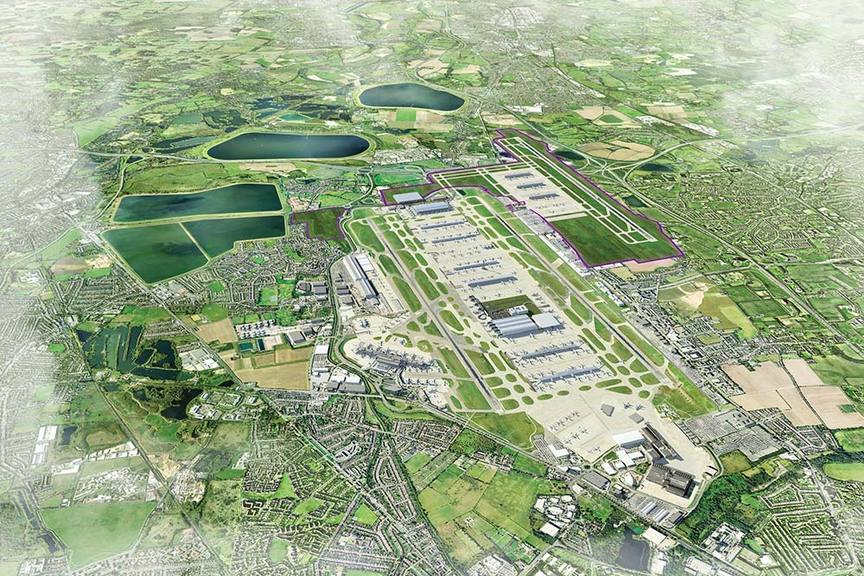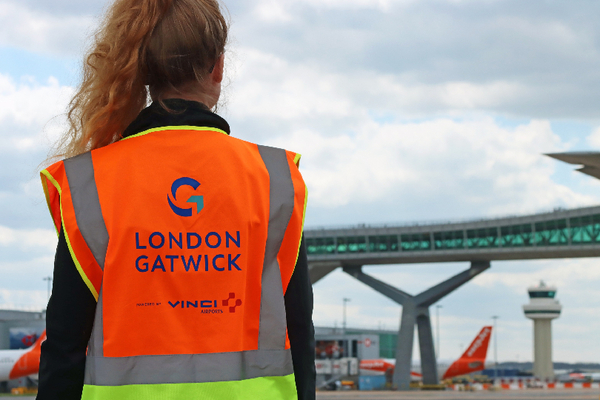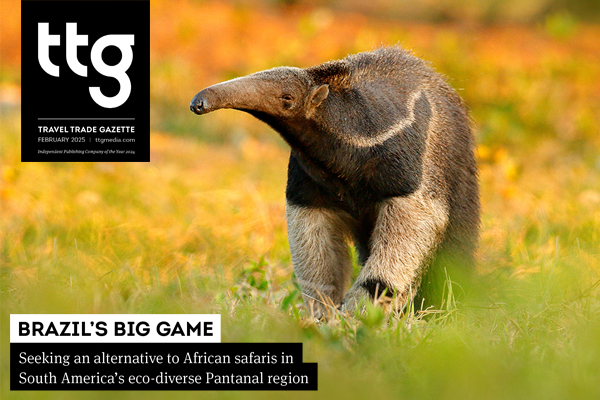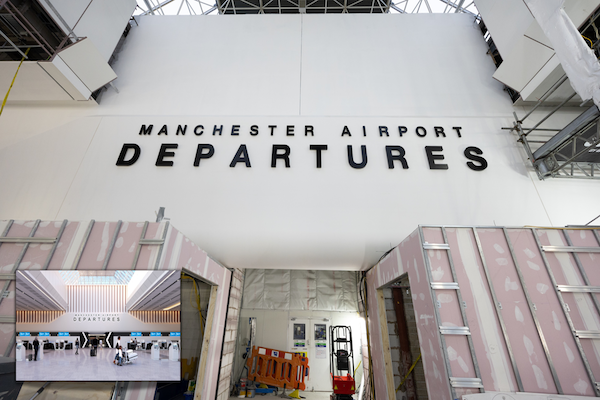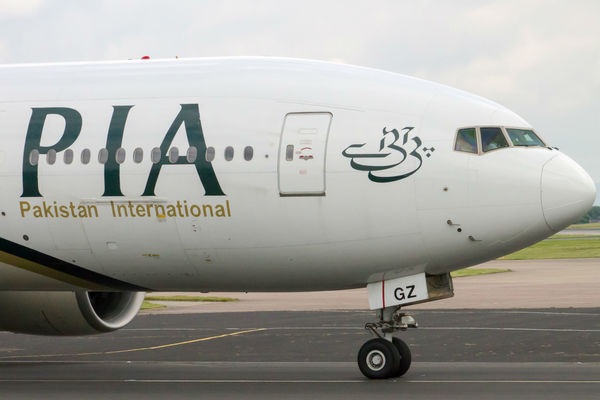London's airports ready to grow – and 'steal a march' on Heathrow
 Rob Gill
Rob GillGatwick, Luton and London City airports have all lodged applications to significantly increase passenger capacity, while Heathrow’s expansion hopes have lost momentum since Covid. Rob Gill digs a little deeper.
Heathrow’s biggest rivals in the south-east are “stealing a march” on Britain’s busiest airport with plans to significantly increase passenger capacity, while Heathrow’s own expansion plans stall post-Covid.
Gatwick recently submitted a planning application to bring its existing emergency runway into “routine use” by the end of the decade, a move that could increase annual passenger capacity from 43 million to 75 million by the late-2030s were it to be approved.
Total passenger numbers at the Sussex airport, Britain’s second busiest, rebounded to 32.8 million last year, and hit a high of 46.6 million in 2019.
Elsewhere, Stansted announced plans earlier this month for an extended terminal building to increase capacity, which can rise to 43 million annual passengers under its current permissions. This compares with traffic of 26 million passengers in the year to 31 March 2023.
Luton and London City airports have expansion plans of their own too; Luton’s hopes of almost doubling capacity from 18 million annual passengers to 32 million took a major step forward earlier this year when it lodged an application for a development consent order after four years of consultation.
London City, meanwhile, wants to increase its annual passenger cap by more than a third from 6.5 million to nine million by 2031, and to have its 24-hour curfew from 12.30pm on Saturdays removed.
The airport’s first attempt to get its plans approved were voted down unanimously by councillors in the London borough of Newham on Monday night (10 July). The airport has already confirmed it will appeal the decision.
Heathrow, though, has been largely coy on its plans for several years now, breaking its silence earlier this year only to insist expansion “remains probable” following a pause in development due to the pandemic.
Pre-Covid, the airport was operating close to capacity; annual passenger numbers hit a pre-Covid high of 80.9 million in 2019 – almost double Gatwick – off the back of nearly 476,000 air traffic movements, just 4,000 shy of its current 480,000 cap.
Its plans to increase this cap by around another half (54%) to 740,000 have the backing of the government in principle, but questions have been raised over when there is still the need or the appetite for this level of expansion, which could allow for annual passenger numbers of 135 million by 2050 – 55 million more than in 2019.
However, combining the proposed growth across Gatwick (32 million), Luton (14 million) and London City (2.5 million) alone, notwithstanding Stansted’s plans to create room for 17 million more passengers than it currently handles, all-but covers the projected 55 million additional passengers an expanded Heathrow could accommodate.
After Gatwick lodged its plans, infrastructure specialist lawyer Angus Walker, a partner at BDB Pitmans, said Gatwick may have “stolen a march” on Heathrow in the battle for expansion, with the development plans from other nearby airports also potentially causing Heathrow problems in getting a final go-ahead for the additional runway.
“These applications are all getting in before Heathrow makes its application for a third runway - making the case for that airport more difficult,” said Walker.
“Being large pieces of infrastructure with considerable environmental impacts such as noise, traffic and carbon emissions, airports must jump through numerous regulatory and legal hoops to gain approval. In the Gatwick versus Heathrow battle, it seems that Gatwick have stolen a march on their rival.”
Sustainability hurdles
However, John Grant, from aviation data company OAG, said it was far from certain Gatwick would gain approval for its second runway plan. He told TTG he was also doubtful the Sussex airport could ever really challenge Heathrow as the UK’s main hub, even if Gatwick does secure planning permission to routinely use its northern standby runway.
“The two airports do, of course, compete – but Gatwick serves more of a local market and with an increasing low-cost network,” added Grant. “I suspect that is the way it will go in the future and indeed how the Gatwick management team and owners probably want it to develop as there is more cash in that play.
“I think there will be more than enough for Gatwick to go for and develop without needing to try and replicate the Heathrow model with all of its inbuilt complexity.”
Aviation consultant John Strickland added: “As Heathrow becomes more constrained in the absence of a new runway, Gatwick can certainly come to rival it in terms of traffic volume should its own runway plans come to fruition.
“However, it can never become a hub given the mix of airlines and routes it has. Heathrow benefits from long-haul and short-haul networks built up over many decades by British Airways.
"Gatwick has a different passenger demographic driven far more by short-haul leisure and less by long-haul. Even if capacity increases, I do not expect this mix to change significantly.”
Another consideration, said Strickland, is sustainability. He stressed all airport expansion plans would need “strong arguments to address sustainability concerns”, including a focus on airlines that fly more fuel-efficient aircraft, which are also quieter and produce fewer emissions.
All of these planned airport expansion schemes in the south-east are certain to attract vocal opposition, particularly from environmental groups, which will make the UK government’s role crucial in deciding which ones – if any – can go ahead.
Heathrow’s third runway was first given approval in 2018 through the Airport National Policy Statement (ANPS) and this remains in place for now. But the airport has yet to submit a detailed planning application.
Political appetite?
Government support for expansion at Heathrow has seemingly been fairly tepid of late, which is likely to give Gatwick and other airports some encouragement – particularly as none of their plans involve building a completely new runway.
During a debate on Heathrow expansion in the House of Commons in May, transport minister Jesse Norman stressed the ANPS “would be considered again” following last year’s publication of the government’s Jet Zero strategy, which sets out a roadmap for the decarbonisation of aviation by 2050.
“The timing of reconsideration would need to have regard to the availability of long-term aviation demand forecasts,” added Norman. “It is clear the government continues to support airport growth where it is justified, and that expansion of any airport in England must meet our strict climate change obligations to be able to proceed.
“The government’s approach to sustainable aviation growth is supported by analysis that shows the country can achieve net zero emissions by 2050 without the need to intervene directly to limit aviation growth.”
With a general election fast approaching, the government is unlikely to be keen to get embroiled in further controversy around airport expansion in the south-east over the coming months.
But that clearly hasn't stopped Gatwick and others from trying their luck, particularly with the deafening silence currently emanating from Heathrow.
Sign up for weekday travel news and analysis straight to your inbox

Rob Gill
Supplier Directory
Find contacts for 260+ travel suppliers. Type name, company or destination.
